9 Best Herbal Teas For Diverticulitis
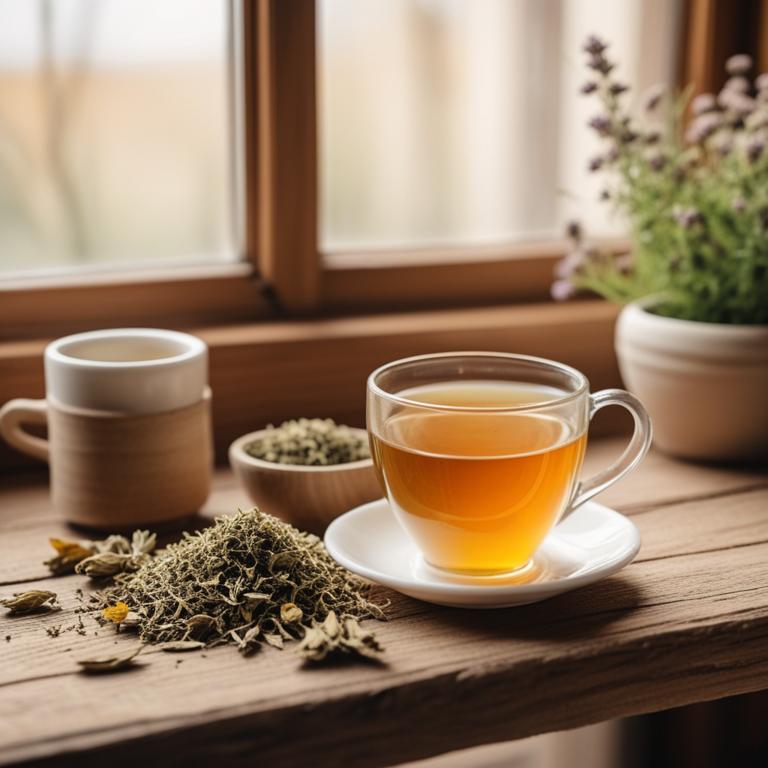
Herbal teas for Diverticulitis are a natural remedy that involves the use of various herbs to alleviate the symptoms of diverticulitis, a condition characterized by inflammation of the digestive tract.
These teas can help treat diverticulitis by reducing inflammation, improving digestion, and soothing the stomach.
Some examples of herbal teas that can be used to treat diverticulitis include peppermint tea, which helps to relax the muscles in the digestive tract and reduce inflammation; ginger tea, which has anti-inflammatory properties that can help to alleviate pain and discomfort; chamomile tea, which soothes the stomach and promotes relaxation; dandelion tea, which supports digestion and reduces inflammation; and licorice root tea, which has anti-inflammatory properties and can help to soothe the stomach.
Additionally, other herbal teas such as slippery elm, marshmallow root, and turmeric tea can also be effective in treating diverticulitis due to their anti-inflammatory and soothing properties.
Related Study
According to "Phytotherapy research : PTR", teas for diverticulitis, such as those prepared from Haplopappus baylahuen, Rosa moschata, and Peumus boldus, may be useful to provide the organism with molecules capable of protecting the gastrointestinal tract against certain pathologically relevant oxidant species.
Below there's a list of the 9 best herbal teas for diverticulitis.
Table of Contents
Also, you may be interested in...
Today Free Bonus!
The Ultimate Herb Drying Checklist
(For Long-Lasting Powerful Medicinal Effect)
How to easily dry herbs that don't mold and that keep their strong medicinal power for more than 1 year.
1. Curcuma longa teas
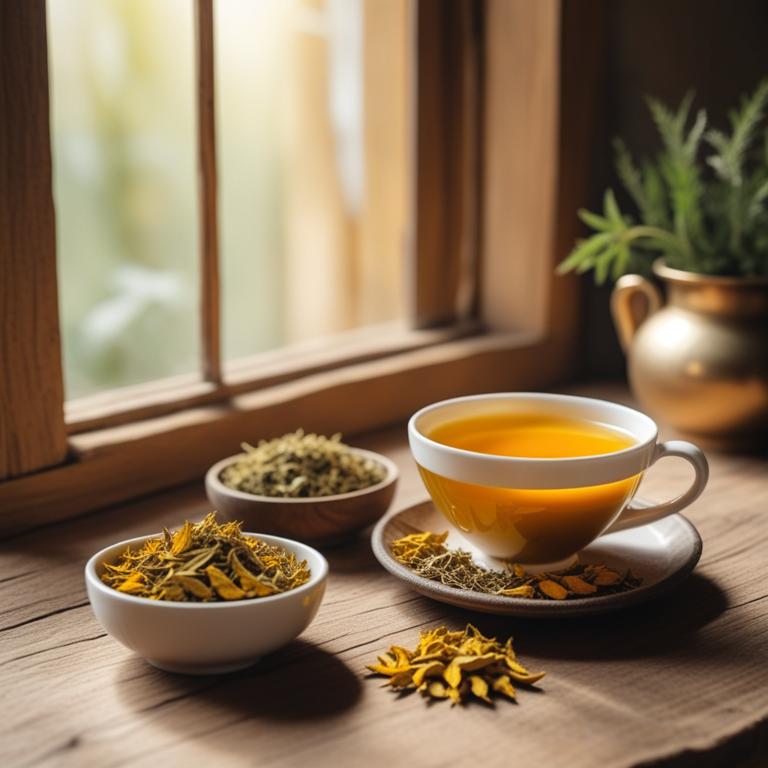
Curcuma longa teas have been traditionally used to treat diverticulitis, an inflammatory condition characterized by the formation of pouches in the digestive tract.
The anti-inflammatory and antioxidant properties of curcuma longa teas, particularly due to its high content of curcuminoids, help to reduce inflammation and oxidative stress associated with diverticulitis.
Curcumin, a bioactive constituent of curcuma longa teas, has been shown to inhibit the production of pro-inflammatory enzymes and cytokines, thereby promoting healing and reducing symptoms of diverticulitis.
The benefits of curcuma longa teas in treating diverticulitis include reduced inflammation, improved gut health, and a lower risk of complications, making it a potentially valuable adjunctive treatment for this condition.
Related Study
According to the provided study, Curcuma longa teas for diverticulitis have been identified as a potential natural remedy due to the presence of curcumin, a phytochemical with anti-inflammatory properties, which may help alleviate pain and discomfort associated with the condition.
Recipe:
- Gather 1 cup of dried Curcuma longa root, 1 cup of water, and a tea infuser or strainer.
- Rinse the dried Curcuma longa root with cold water and remove any dirt.
- Add the rinsed Curcuma longa root to the tea infuser or strainer and place it in a cup.
- Pour 1 cup of boiling water over the Curcuma longa root and let it steep for 5-7 minutes.
- Strain the tea and drink it warm, 3 times a day, after meals for optimal benefits.
Curcuma longa teas can be an effective natural remedy for treating diverticulitis, but possible side effects include gastrointestinal issues such as nausea, diarrhea, and stomach upset due to its spicy and irritant properties.
Precautions should be taken to avoid exacerbating the condition, such as starting with a low dose, gradually increasing it, and monitoring for any adverse reactions, especially in individuals with pre-existing digestive problems, and those with a history of stomach ulcers or acid reflux.
Curcuma Longa Tea on Amazon
Pure Ceylon Turmeric Brew - 100% Organic Ceylon Turmeric Tea Bags (40 Sachets - pack of 2 – 20 COUNT PER BOX)
Disclaimer: We earn a commission if you click this link and make a purchase at no additional cost to you.
2. Zingiber officinale teas

Zingiber officinale teas, also known as ginger teas, have been traditionally used to treat various gastrointestinal issues, including diverticulitis.
The anti-inflammatory properties of ginger, particularly the bioactive constituents gingerol and shogaol, help to reduce inflammation and alleviate pain associated with diverticulitis.
These properties also aid in improving digestion and reducing spasms in the digestive tract, which can help to manage symptoms of diverticulitis.
Regular consumption of ginger teas may provide benefits in treating diverticulitis by reducing inflammation, improving digestive health, and promoting overall well-being.
Related Study
According to "Pakistan journal of pharmaceutical sciences", Zingiber officinale teas may be beneficial for diverticulitis due to its high antioxidant activity and the presence of phenolic compounds, flavonoids, and polyphenols, which can help reduce inflammation and promote healing.
Recipe:
- Gather 1 cup of water, 1 tablespoon of fresh ginger root, and a tea infuser or strainer.
- Peel the ginger root and slice it thinly.
- Add the sliced ginger to the tea infuser or strainer and place it in a pot.
- Pour the cup of water over the ginger and bring to a boil. Reduce heat and simmer for 5-7 minutes.
- Strain the tea into a cup and drink 2-3 times a day as needed, while following a diverticulitis treatment plan under a doctor's guidance.
Zingiber officinale teas can be used as a potential treatment for diverticulitis, but using them may cause side effects such as stomach upset, diarrhea, and nausea due to its spicy and warming properties.
To use Zingiber officinale teas effectively, it is recommended to start with small doses and gradually increase as needed, and to avoid using it during pregnancy or breastfeeding, and to be cautious when consuming it with other medications that may interact with its active compounds.
Zingiber Officinale Tea on Amazon
FGO Organic Ginger Tea, 100 Count, Eco-Conscious Tea Bags, Caffeine Free, Packaging May Vary (Pack of 1)
Disclaimer: We earn a commission if you click this link and make a purchase at no additional cost to you.
3. Cinchona officinalis teas
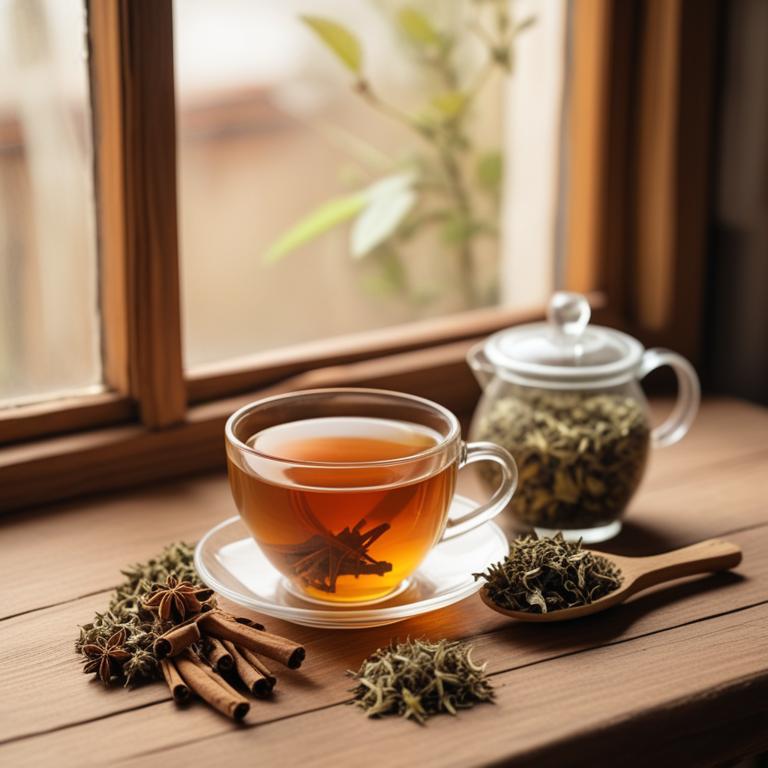
Cinchona officinalis teas have been traditionally used to treat diverticulitis, an inflammatory condition of the digestive tract, due to their anti-inflammatory and antimicrobial properties.
The bioactive constituents of Cinchona officinalis, including quinine and alkaloids, help to reduce inflammation and alleviate symptoms associated with diverticulitis, such as abdominal pain and fever.
The quinine content in Cinchona officinalis teas also exhibits antimicrobial properties, which help to combat bacterial overgrowth and reduce the risk of infection in the digestive tract.
The benefits of using Cinchona officinalis teas to treat diverticulitis include reduced inflammation, alleviated symptoms, and a lower risk of complications, making it a promising herbal remedy for this condition.
Recipe:
- Gather 2 tablespoons of dried Cinchona officinalis bark and 1 cup of boiling water.
- Steep the bark in the boiling water for 5-7 minutes.
- Strain the mixture into a cup using a fine-mesh sieve or cheesecloth.
- Add honey to taste, if desired, and stir well.
- Drink the tea 2-3 times a day, ideally between meals, for relief from diverticulitis symptoms.
Cinchona officinalis teas can be used to treat diverticulitis, but its use may be associated with side effects such as nausea, dizziness, and headaches due to its high quinine content.
To use Cinchona officinalis teas safely, it is recommended to start with small doses, monitor your body's response, and avoid consumption with other stimulants or medications, as this may exacerbate potential side effects and interactions.
Cinchona Officinalis Tea on Amazon
Quina Roja(chinona) & Palo de Víbora Tea – 100% Natural, Vegan, Hecho en México | 25 Tea Bags
Disclaimer: We earn a commission if you click this link and make a purchase at no additional cost to you.
4. Glycyrrhiza glabra teas

Glycyrrhiza glabra teas, also known as licorice root tea, have been traditionally used to treat diverticulitis, an inflammatory condition of the digestive tract.
The anti-inflammatory properties of licorice root tea, particularly due to its bioactive constituents such as glycyrrhizin and flavonoids, help to reduce inflammation and alleviate symptoms associated with diverticulitis.
The soothing and calming effects of this herbal preparation can help to treat diverticulitis by reducing pain and discomfort, promoting healing, and preventing complications.
The benefits of using Glycyrrhiza glabra teas to treat diverticulitis include reducing inflammation, promoting digestive health, and providing a natural and non-invasive treatment option.
Recipe:
- Gather 1 cup of dried Glycyrrhiza glabra root, 1 cup of water, and a tea strainer.
- Boil the water and pour it over the dried root in a cup.
- Let the mixture steep for 5-7 minutes, then strain it using a tea strainer.
- Discard the solids and drink the tea warm, 2-3 times a day.
- Consider adding 1-2 teaspoons of honey to sweeten the tea, if needed.
Glycyrrhiza glabra teas can be used to potentially alleviate symptoms of diverticulitis, but its use may lead to side effects such as headaches, dizziness, and an increased heart rate due to its ability to mimic aldosterone, a hormone that regulates electrolyte balance.
Precautions include monitoring potassium levels, as excessive consumption can lead to hypokalemia, and avoiding use with medications that affect blood pressure, such as diuretics, to minimize the risk of cardiovascular complications.
Glycyrrhiza Glabra Tea on Amazon
Pukka Herbal Teas Licorice and Cinnamon - 20 Bags, 20 Count
Disclaimer: We earn a commission if you click this link and make a purchase at no additional cost to you.
5. Silybum marianum teas
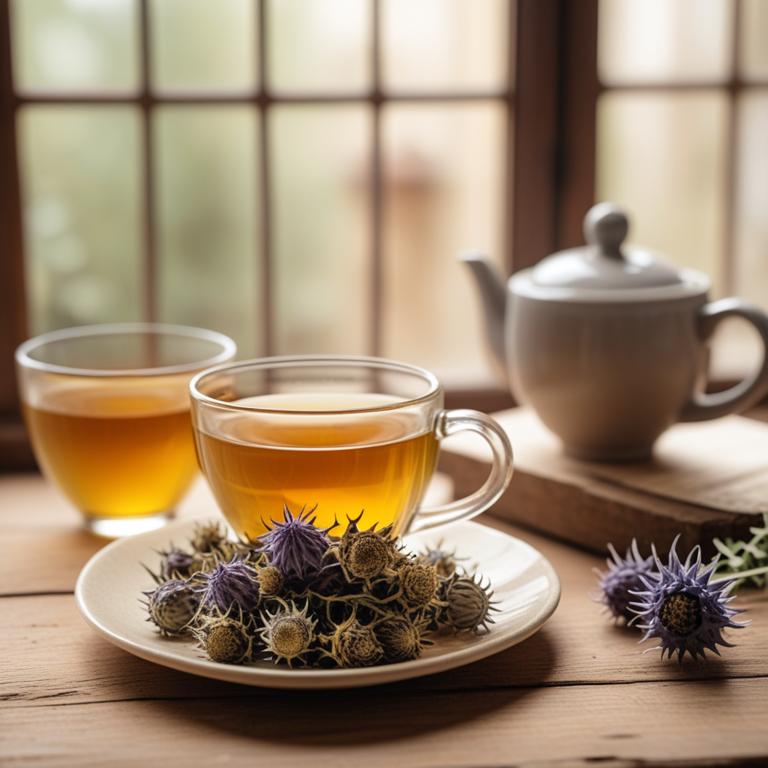
Silybum marianum teas, also known as milk thistle tea, have been traditionally used to treat diverticulitis due to its anti-inflammatory and antioxidant properties.
The bioactive constituents of Silybum marianum, particularly silymarin, help to reduce inflammation and oxidative stress in the digestive tract, alleviating symptoms of diverticulitis.
Silymarin also has been shown to improve liver function and promote the healing of the intestinal lining, making it an effective herbal preparation for treating diverticulitis.
By reducing inflammation and promoting healing, Silybum marianum teas can provide relief from the symptoms of diverticulitis, including abdominal pain, bloating, and digestive discomfort.
Recipe:
- Gather 2 cups of fresh Silybum marianum leaves and flowers, or 1 cup of dried leaves and flowers.
- Combine the leaves and flowers in a heat-resistant cup or teapot.
- Pour 2 cups of boiling water over the Silybum marianum mixture.
- Let the mixture steep for 5-10 minutes, then strain it into another cup.
- Drink 1/2 cup of the tea, 3-4 times a day, for relief from diverticulitis symptoms.
Silybum marianum teas can be used to treat diverticulitis, but potential side effects may include digestive issues such as diarrhea, stomach cramps, and nausea.
To minimize risks, it's essential to consume Silybum marianum teas in moderation, avoiding excessive intake, especially if you have a history of gastrointestinal problems, and to monitor your body's reaction closely for any signs of adverse effects.
Silybum Marianum Tea on Amazon
Celebration Herbals Organic Milk Thistle Seed Herbal Tea -- 24 Tea Bags, NET WT.60, 2.11 OZ
Disclaimer: We earn a commission if you click this link and make a purchase at no additional cost to you.
6. Ginkgo biloba teas

Ginkgo biloba teas have been traditionally used to treat various health issues, including diverticulitis, due to their anti-inflammatory and antioxidant properties.
The flavonoids and terpenoids present in Ginkgo biloba teas help to reduce inflammation and improve blood circulation, which can aid in the healing process of diverticulitis.
The bioactive constituents, including quercetin and bilobalide, exhibit potent antioxidant and anti-inflammatory activities, which can help to prevent the formation of diverticula and alleviate symptoms associated with the condition.
By incorporating Ginkgo biloba teas into one's diet, individuals may experience relief from diverticulitis symptoms, such as abdominal pain and digestive issues, and enjoy the additional benefits of improved cardiovascular health and reduced oxidative stress.
Recipe:
- Gather 1 cup of fresh or dried Ginkgo biloba leaves.
- Use a strainer or cheesecloth to clean the leaves from any dirt or debris.
- Steep 2 tablespoons of Ginkgo biloba leaves in 1 cup of boiling water for 5-7 minutes.
- Strain the tea into another cup using the strainer or cheesecloth to remove the leaves.
- Drink the tea 2-3 times a day, as needed, to help manage diverticulitis symptoms.
Ginkgo biloba teas can help alleviate symptoms of diverticulitis, but they may cause gastrointestinal side effects such as diarrhea, stomach upset, and nausea.
Precautions to take when using Ginkgo biloba teas to treat diverticulitis include avoiding them in individuals with bleeding disorders, as they can increase the risk of bleeding, and also to monitor blood pressure and adjust the dosage if necessary due to potential effects on blood pressure regulation.
Ginkgo Biloba Tea on Amazon
Tai Chi Think Sharp Energizing Tea (Ginseng Ginkgo Biloba) 12 Bags
Disclaimer: We earn a commission if you click this link and make a purchase at no additional cost to you.
7. Taraxacum officinale teas
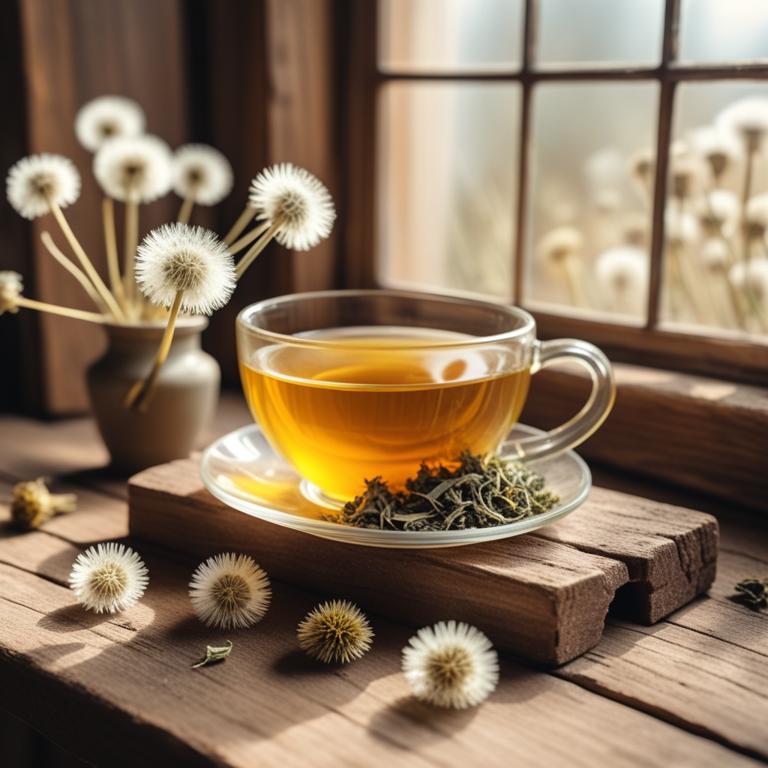
Taraxacum officinale teas, also known as dandelion root tea, have been traditionally used to treat diverticulitis due to its anti-inflammatory and antimicrobial properties.
The bioactive constituents present in this herbal preparation, such as flavonoids, sesquiterpenes, and phenolic acids, help to reduce inflammation and alleviate symptoms of diverticulitis.
Taraxacum officinale teas may also aid in treating this ailment by promoting digestive health, reducing oxidative stress, and supporting the body's natural detoxification processes.
The benefits of using Taraxacum officinale teas to treat diverticulitis include reduced pain and discomfort, improved digestion, and a lower risk of complications.
Recipe:
- Gather 1 cup of fresh Taraxacum officinale leaves and 1 cup of boiling water.
- Measure 1 tablespoon of dried Taraxacum officinale root (optional) and add to the boiling water.
- Steep the Taraxacum officinale leaves and root in the boiling water for 5-7 minutes.
- Strain the tea into a cup and discard the solids.
- Drink 1 cup of the Taraxacum officinale tea 2-3 times a day, as needed for diverticulitis relief.
Taraxacum officinale teas can be used to treat diverticulitis, but possible side effects may include stomach upset, diarrhea, and allergic reactions in some individuals.
When using Taraxacum officinale teas for this purpose, it's essential to take precautions such as drinking plenty of water, starting with small amounts to assess tolerance, and avoiding use during pregnancy or breastfeeding due to potential effects on the fetus or baby.
Taraxacum Officinale Tea on Amazon
Teeccino Dandelion Coconut Tea - Caffeine Free, Roasted Herbal Tea with Prebiotics, 3x More Herbs than Regular Tea Bags, Gluten Free - 25 Tea Bags
Disclaimer: We earn a commission if you click this link and make a purchase at no additional cost to you.
8. Achillea millefolium teas
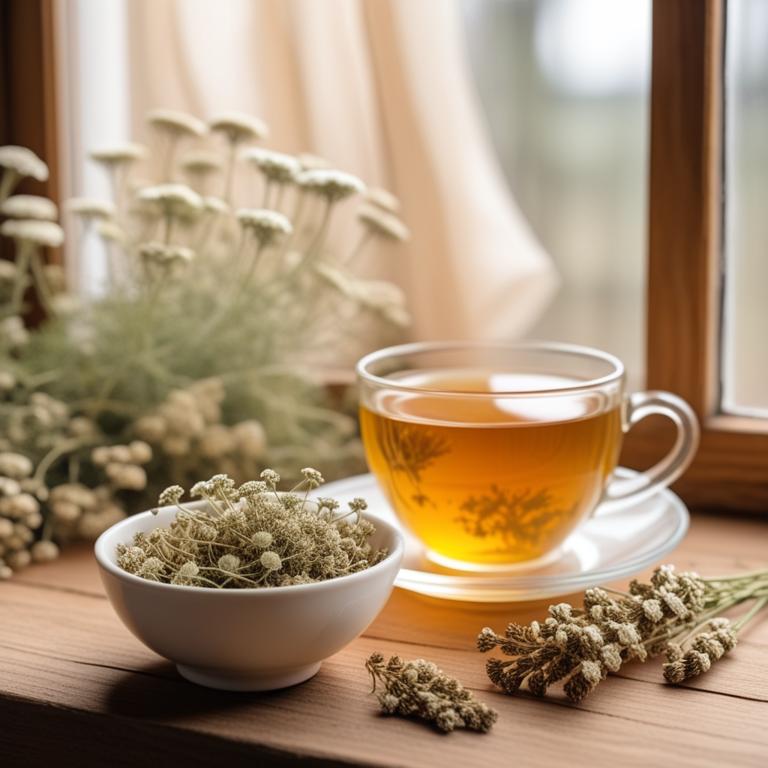
Achillea millefolium teas, also known as yarrow teas, have been used for centuries to treat various gastrointestinal issues, including diverticulitis.
This herbal preparation's anti-inflammatory and antimicrobial properties help to alleviate symptoms of diverticulitis, such as abdominal pain and inflammation.
The bioactive constituents of yarrow teas, including flavonoids, sesquiterpenes, and volatile oils, contribute to its therapeutic effects by reducing inflammation and promoting healing in the intestinal lining.
Regular consumption of yarrow teas has been found to help manage diverticulitis by reducing inflammation, preventing infections, and promoting overall digestive health, offering a natural and effective treatment option for this condition.
Recipe:
- Gather 1 cup of dried Achillea millefolium leaves.
- Measure 1 cup of water in a pot.
- Add 2 tablespoons of dried Achillea millefolium leaves to the water.
- Heat the water to 212°F (100°C) and let it simmer for 5-7 minutes.
- Strain the tea and drink 1 cup, 3 times a day, after meals to help with diverticulitis.
Achillea millefolium teas can be used to treat diverticulitis, but it may cause side effects such as dizziness, nausea, and allergic reactions in some individuals.
When using Achillea millefolium teas to treat diverticulitis, it is essential to take precautions such as monitoring blood pressure, kidney function, and liver function regularly, and avoiding consumption if you have a history of bleeding disorders or are taking anticoagulant medications.
Achillea Millefolium Tea on Amazon
Biokoma Pure and Organic Yarrow Dried Herb 30 Tea Bags 1.5oz In Resealable Moisture Proof Pouch, USDA Certified Organic - Herbal Tea, No Additives, No Preservatives, No GMO, Kosher
Disclaimer: We earn a commission if you click this link and make a purchase at no additional cost to you.
9. Melissa officinalis teas

Melissa officinalis teas have been traditionally used to treat various gastrointestinal issues, including diverticulitis.
This herbal preparation's anti-inflammatory and antimicrobial properties help to alleviate symptoms and promote recovery by reducing inflammation in the affected areas and preventing bacterial overgrowth.
The bioactive constituents of Melissa officinalis, such as limonene and linalool, have been found to possess antioxidant and anti-inflammatory activities, which contribute to its therapeutic effects.
The benefits of using Melissa officinalis teas to treat diverticulitis include reduced inflammation, pain relief, and improved digestion, making it a potential natural remedy for managing this condition.
Recipe:
- Gather 1 tablespoon of dried Melissa officinalis leaves. If you have fresh leaves, use 2-3 sprigs.
- Heat 1 cup of boiling water. Remove from heat and let it cool for 1 minute.
- Add the Melissa officinalis leaves to the hot water. Let it steep for 5-7 minutes.
- Strain the tea into a cup using a tea strainer or a piece of cheesecloth. Discard the leaves.
- Drink 1 cup of the Melissa officinalis tea 2-3 times a day to help manage diverticulitis symptoms.
Melissa officinalis teas can be effective in treating diverticulitis, but it may cause side effects such as stomach upset, nausea, and dizziness due to its ability to stimulate digestion and relax the muscles in the gut.
Precautions should be taken when using Melissa officinalis teas, including drinking it in moderation, avoiding it during menstruation or pregnancy, and being cautious when mixing it with other medications as it may interact with them and exacerbate the condition.
Melissa Officinalis Tea on Amazon
Maxx Herb Lemon Balm Extract - Max Strength Liquid Tincture Absorbs Better Than Capsules or Tea, for Nervous System Support, & Stress Management - Alcohol Free - 4 Oz Bottle (60 Servings)
Disclaimer: We earn a commission if you click this link and make a purchase at no additional cost to you.